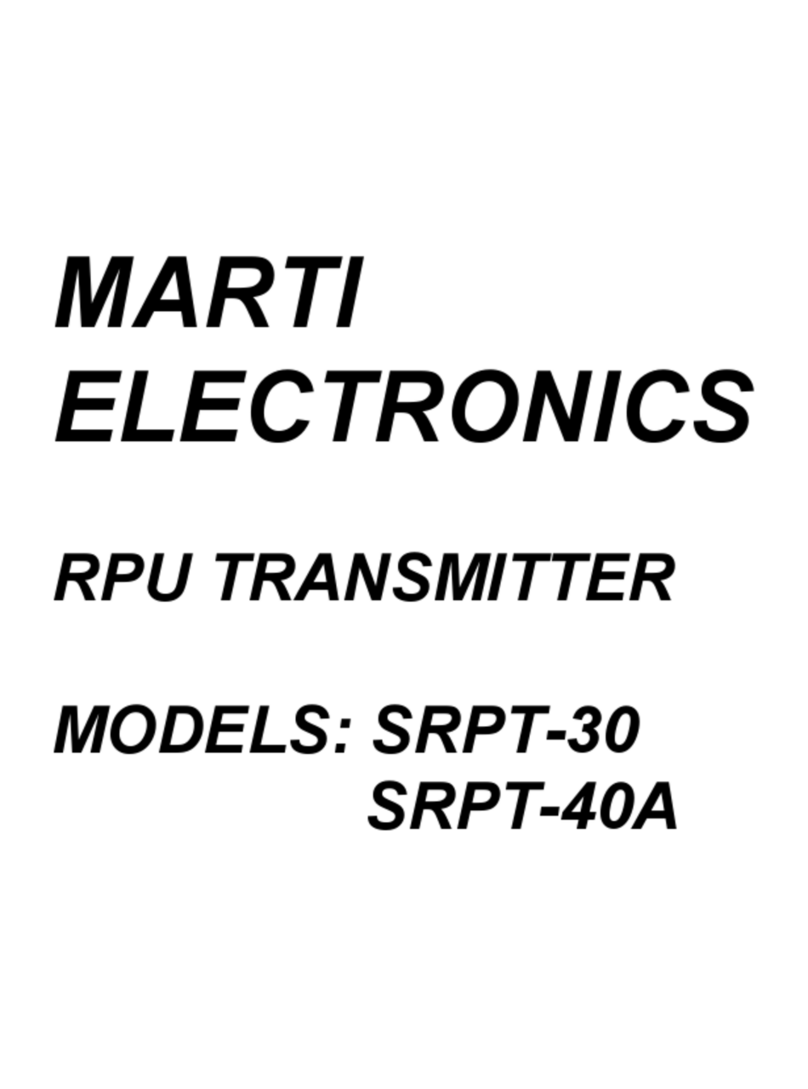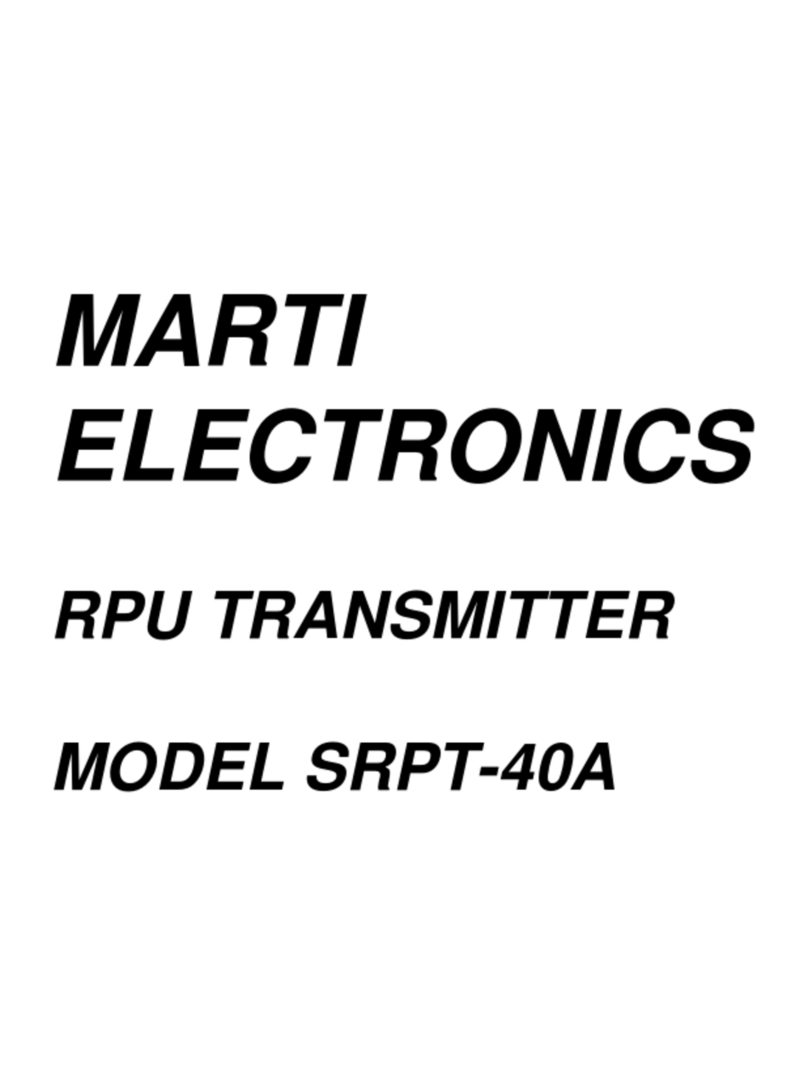
6
3. The accessory connector has several uses such as remote control, automatic switching, and external DC power.
Connection instructions are furnished with these accessories.
4. Connect STL transmitting antenna coax to “J6 ANTENNA”. This requires a type N male connector. A short
flexible jumper (20” max.) may be used between J6 and semi–flexible coax. Marti Part No. 585–017 double
shielded, low–loss RG 214/U jumper is recommended.
WARNING
WARNING
THIS EQUIPMENT MUST BE OPERATED WITH A 3–PRONG,
GROUNDED, 115 VOLT, AC OUTLET RECEPTACLE. FAILURE
TO USE A PROPERLY GROUNDED OUTLET COULD RESULT
IN A SAFETY HAZARD OR FAULTY EQUIPMENT
PERFORMANCE.
5. For dual channel stereo, use only Marti Part No. 585–017, 20.5 inch double shielded jumper between J6 of each
transmitter and the indicated connectors of the HRC–10B Series Combiners. Use a third Part No. 585–017
jumper between the “ANTENNA” connector of the HRC–10B and the semi–rigid coax. Refer to Drawing
702–058.
6. Turn transmitter off. Connect the ac line receptacle on back of the transmitter to a 115 volt AC power source
with special cord set supplied. Use only 3–prong grounded outlet receptacles.
ANTENNA INSTALLATION.
STL Antenna Installation Checklist.
The following suggestions are offered to help those responsible for antenna installations avoid costly errors in as-
sembly and adjustment. Marti Electronics Inc. assumes no responsibility for the installation and performance of
antenna systems associated with the equipment. The following text presents a listing of some of the most frequently
asked questions associated with the equipment. The text is not intended to be a complete step–by–step procedure.
Antenna Assembly.
Follow the manufacturer’s instructions carefully. If no instructions were included with the antenna, call or write the
antenna manufacturer for instructions. Errors are frequently made in assembly of the RF feed dipole elements which
must be installed in the same plan as the reflector grids. In other words, if the reflector grid elements are horizontal,
then the feed dipole elements must also be horizontal. Cross polarization of grid and feed dipole will result in total
loss of antenna gain.
Transmission Line Connector Assembly.
Do not use RG–58 U or RG–8 U cable for STL station antennas. They have too much loss at VHF and UHF fre-
quencies. Follow the instructions furnished by the manufacturer when cutting the coaxial cable. Inspect the cable
ends for small metal fragments which can short–circuit the line inside the connector assembly. Check the line for a
short–circuit condition after each connector is installed using an Ohmmeter. Pressurized line should be checked for
several days under pressure before installation on a tower to ensure that there are no leaks in the line or fittings.
Moisture Proofing Coax Connectors and Fittings.
Extreme care must be exercised with coaxial cable before and after connectors have been installed to ensure that
moisture does not enter the line. Foam dielectric line can absorb moisture absorption which is difficult to detect and
remedy. Therefore, keep the line dry while in storage with the ends tightly capped. Coaxial splices, connectors, and
fittings, to be located outside should be made mechanically tight, then coated with a weather–proofing material such
as SCOTCHKOTE over at least two layers of SCOTCH 88 vinyl plastic electrical tape. Moisture problems in
antenna systems are usually traced back to connectors which have NOT been properly taped. The Marti K–1
grounding and weatherproofing kit is recommended for use in each new antenna installation.






























